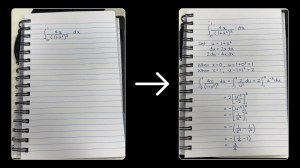Over last three polls in J-K, rising victory margins and fewer tight contests
The average winning margin has risen from under 7,000 votes to nearly 13,000 votes, while the number of Assembly segments where the winner and runner-up were separated by less than 10% vote share has more than halved
 Iltija Mufti, daughter of Peoples Democratic Party (PDP) chief Mehbooba Mufti and party candidate from Bijbehara constituency, and BJP candidate Sofi Yousuf greet each other after filing their nominations for J&K Assembly elections, in Anantnag district. (PTI)
Iltija Mufti, daughter of Peoples Democratic Party (PDP) chief Mehbooba Mufti and party candidate from Bijbehara constituency, and BJP candidate Sofi Yousuf greet each other after filing their nominations for J&K Assembly elections, in Anantnag district. (PTI)In the decade since Jammu and Kashmir last held Assembly polls, much has changed in the erstwhile state’s electoral landscape. In particular, the winning margins since the 2014 Assembly elections and over the two Lok Sabha polls that followed have increased, with fewer seats decided by narrow margins.
2014 Assembly elections
In the 2014 Lok Sabha elections that the BJP had swept in the rest of the country, the party had won three seats in J&K (including Ladakh that was then part of J&K). The other three had been won by the Peoples Democratic Party (PDP), then led by the late Mufti Mohammad Sayeed and later by his daughter Mehbooba Mufti.
The 2014 Assembly polls that were held months later also proved the most competitive in a decade for J&K. The PDP emerged as the single-largest party with 28 seats, though falling far short of the majority mark of 44 in the 87-member House. All the seats won by the PDP were in the Kashmir province.
The BJP followed with 25 seats, all in the Jammu region, and provided support to the PDP to form a coalition government.
The Farooq Abdullah-led National Conference (NC) won 15 seats and the Congress, an NC ally until the 2014 Lok Sabha polls held earlier that year, won 12 seats.
That year, 50 Assembly seats were decided by a winning margin of less than 10% of the total votes in each seat. The PDP won the most such seats at 18, followed by the NC at 13. The BJP won seven such seats and the Congress six. The remaining six seats won by a margin of less than 10% went to Independents and minor parties. The overall average winning margin was 6,700 votes.
 In the 2014 Assembly polls, the PDP emerged as the single-largest party with 28 seats.
In the 2014 Assembly polls, the PDP emerged as the single-largest party with 28 seats.
While the PDP won the most seats with close margins, it also lost the most seats decided by close contests, finishing as the runner-up in 18 where the winning margin was less than 10% of the total votes cast. The NC was the runner-up in 16 of these seats, followed by the Congress in nine and the BJP in three.
The BJP recorded the highest average margin among major parties, at 14,428 votes, in an election held at the height of the Modi wave across the country, followed by the Congress at 5,290, the PDP at 3,754 and the NC at 2,295.
Notably, there were 52 seats where a third candidate secured more votes than the winning margin, suggesting they could have swung the election in favour of the ultimate winner. In as many as 23 seats, the Congress candidate finished third or worse but won more votes than the winning margin, the most for any party. In six seats, the None of the Above (NOTA) option got more votes than the winning margin.
2019 Lok Sabha elections
In the 2019 Lok Sabha polls, a look at the Assembly segment-level data shows that results in just 22 of the total 87 segments were decided by a winning margin of less than 10% of the total votes in each seat.
In the elections that were held just months before the abrogation of Article 370, which removed J&K’s special status and split it into two Union territories, the BJP and NC each won three seats (including Ladakh at the time, won by the BJP). The PDP drew a blank after winning three Lok Sabha seats in 2014, while the Congress again failed to win any seat.
At the Assembly-segment level, the NC won the most segments by margins less than 10% of the total votes, at 11, followed by the BJP and Congress at three each, and the PDP and the Sajad Gani Lone-led Peoples Conference (PC) at one each. Independents led in three such segments. The average winning margin across all Assembly segments was 17,000 votes – nearly three times the 2014 Assembly poll average.
 In the 2019 Lok Sabha polls, the NC won the most Assembly segments by margins less than 10% of the total votes.
In the 2019 Lok Sabha polls, the NC won the most Assembly segments by margins less than 10% of the total votes.
In close contests, the PDP finished as the runner-up in five segments, followed by the NC in four, the Congress and PC in three each, and the BJP in two.
The BJP recorded the highest average winning margin at the Assembly-segment level at 32,212 votes, followed by the Congress at 23,981, the NC at 3,268, and the PDP at 320. Notably, the BJP contested in every Lok Sabha seat, with the NC and PDP focusing on the parliamentary seats in the Kashmir Valley.
That year, there were also 22 Assembly segments where a party finishing third or worse secured more votes than the winning margin. The NC won the most such segments at 11. NOTA got more votes than the winning margin in six segments.
2024 Lok Sabha
The recently concluded Lok Sabha polls – held for five parliamentary seats in the first election since J&K’s special status was revoked, its constituency boundaries redrawn through delimitation in 2022, and Ladakah carved out as a separate Union territory – the BJP won the two Jammu seats, the NC won two seats in Kashmir, while one seat in the Valley went to jailed separatist leader Abdul Rashid Sheikh, popularly known as Engineer Rashid.
Assembly-segment level data shows that even fewer segments than in 2019 were decided by winning margins less than 10% of the total votes. Of the total 18 such segments, the BJP and NC won the most at five each, followed by the Congress and PDP at three each, and the PC and Engineer Rashid winning one each. However, the average winning margin across all 90 Assembly segments fell from 2019, to 13,000 votes.
 In the recently concluded Lok Sabha polls, Assembly-segment level data shows that even fewer segments than in 2019 were decided by winning margins less than 10% of the total votes.
In the recently concluded Lok Sabha polls, Assembly-segment level data shows that even fewer segments than in 2019 were decided by winning margins less than 10% of the total votes.
At five segments, the Congress was the runner-up in the most close contests decided by less than 10% of the total vote at the Assembly-segment level, followed by the NC at four, the BJP at three, and the PDP at two.
The BJP and Congress’s average margins fell to 12,590 and 15,840 votes respectively from 2019, but both the NC and PDP raised their average margins to 13,182 and 4,261 votes, respectively. Notably, no party contested all the Lok Sabha seats – the BJP and Congress focused on Jammu’s two Lok Sabha seats, while the NC and PDP focused on Kashmir’s three Lok Sabha seats.
There were also 15 Assembly segments where a party finishing third or worse managed to secure more votes than the victory margin. In all but two of these segments, it was a smaller regional player or Independents that outdid the winning margin. The Apni Party, founded by former PDP minister Altaf Bukhari, won more votes than the winning margin in six segments, followed by the PC in four segments and former Congress CM Ghulam Nabi Azad’s Democratic Progressive Azad Party in three segments.






- 015 hours ago
- 0214 hours ago
- 0315 hours ago
- 045 hours ago
- 0514 hours ago

























